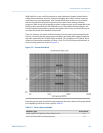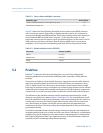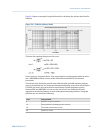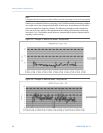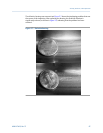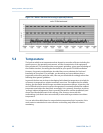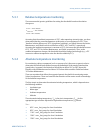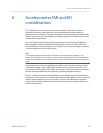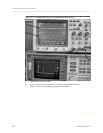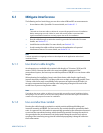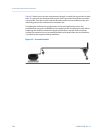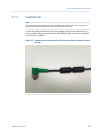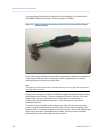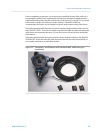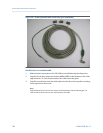
6 Accelerometer EMI and RFI
considerations
The CSI 9420 uses an accelerometer to measure vibration. The process involves a
piezoelectric element, which produces a time-waveform with voltage amplitude
proportional to acceleration. The input bandwidth of the measurement is approximately
20 kHz. This waveform is then digitized and analyzed within the CSI 9420 to produce the
desired vibration parameters.
Due to the high-frequency nature of the measurement, it is inherently susceptible to
electromagnetic interference (EMI) and radio frequency interference (RFI), which can
cause distortions in the measurement. This section discusses ways to mitigate, eliminate,
or at least significantly reduce these effects.
Note
The mitigating strategies discussed here only apply to the measurement of vibration, as an
accelerometer only measures vibration. If you use a sensor that has both vibration and embedded
temperature capabilities, these strategies will only work for the vibration measurement part of the
sensor.
The primary source of the susceptibility is the cable between the accelerometer and the
transmitter housing. Longer cable lengths act like antennas at high frequencies, and as
such, receive radio frequency (RF) energy and transfer it to the measurement electronics,
which is indistinguishable from the signals it is specifically designed to detect.
Figure 6-1 shows two lab instruments displaying accelerometer signals with and without
interference. The one on top is an oscilloscope, which displays signals (in volts) in the time
domain (signal amplitude as a function of time). The one at the bottom is a spectrum
analyzer, which displays signals (in volts) in the frequency domain (signal amplitude as a
function of frequency).
Accelerometer EMI and RFI considerations
MHM-97408, Rev 15 101



